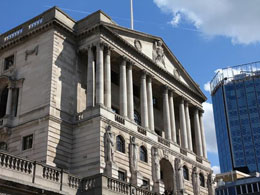
Taking the Block Chain Out of Bitcoin in 2015
Taking the block chain out of Bitcoin and applying it to concepts beyond currency will be a key part of 2015. Their trustless, decentralized nature and future smart contracts provide more than just currency. Today, block chains are the data structure core to decentralized cryptocurrencies. Block chains are bubbles of market-driven nascent economies and platforms of permissionless innovation. Block chains, the concept, are even more important than the bitcoins they safeguard. I'm a big believer that the Internet of Things will grow one very compelling use case - Paul Brody, IBM. For a....
Related News
Nasdaq hasn't been around Bitcoin's Block Chain very long, but they like what they see and are moving to integrate fully with its innovations. The new technology the block chain provides intrigues Nasdaq enough to begin a larger integration with their product portfolio, and the ability to make new offerings for their clientele. In the second half of 2015, this will allow Nasdaq to create a block chain-enabled digital ledger program for the expansion and enhancement of the Nasdaq Private Market platform. NASDAQ Expands Use of Bitcoin's Block Chain Technology. Their implementation of the....
Bitcoin was designed to be a decentralized and trustless payment network - with the power to do this provided by the block chain and its ability to publicly confirm the digital currency's digital transactions. Rather contentiously, however, as the bitcoin economy expands, more and more transactions are being carried out off the block chain. Such transactions are tracked on private databases instead of the block chain, and cannot be publicly tracked. There are pros and cons to both systems. So, which are better? Off-block chain or on-block chain transactions? Visible payments. Legitimate....
A Block Parser reads the Bitcoin block chain. There is no encryption of the data stored in the block chain. Bitcoin is a pseudonymous system. Meaning, ECDSA key pairs are used to abstract the identity of users. However, the binary data in the block chain can be read. The block chain is a transaction database. Every full node participating in the Bitcoin network has the same copy. The Bitcoin protocol dictates its structure and is the means through which each node maintains a duplicate copy. Overall, the block chain is just a data structure for storing blocks. The block chain stores blocks....
The BIP66 update was meant to align miners on stricter cryptographic signatures through a form of block chain Democracy. As part of the BIP rules, once 950 of the past 1,000 blocks upgraded to the newer version all miners would older version blocks. This morning the network met that goal and a small, non-upgraded miner mined an older version block. Instead of rejecting the block roughly half the network accepted it and the Bitcoin block chain forked between software versions. The bogus chain began when the BTCNuggets mining pool mined an out of date block. Though the main chain orphaned....
The adoption of block chain technology will revolutionize capital markets as early as next year, according to a report by TABB research carried by CNBC TV. The report noted that the adoption is not a matter of if, but when. The TABB Group is a New York City-based company that provides insight on securities and investment management. The block chain, the report noted, serves as a big, decentralized ledger that records transaction information and stores it on a global network that can't be tampered with. It noted that R3, a fintech company, leads a 20-bank consortium that is developing a....





